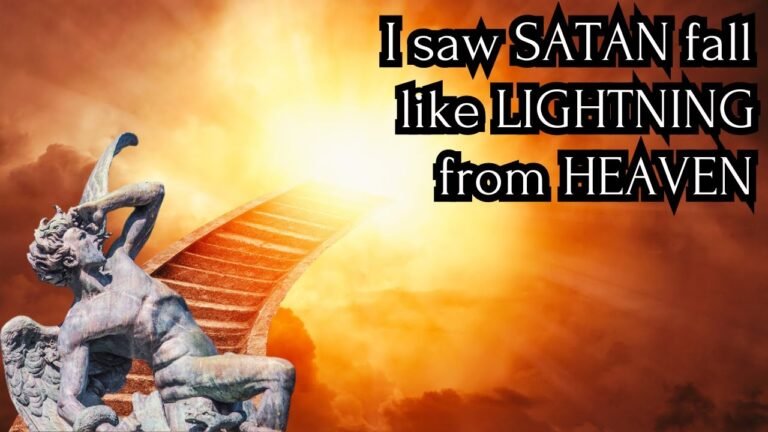Chronological Journey of Jesus’ Crucifixion
The crucifixion of Jesus stands as a pivotal moment in history, intertwining profound religious significance with a dramatic narrative that has captivated hearts for centuries. Understanding the timeline of events leading up to this moment reveals the complexities of the political, social, and spiritual tensions of the time. From the Last Supper to the trial before Pontius Pilate, each moment contributes to the larger story of sacrifice and redemption, inviting exploration into the depths of faith and its enduring impact on humanity.
- The Last Supper: Jesus shares his final meal with his disciples on the evening of Passover, instituting the Eucharist and predicting his betrayal.
- Arrest and Trials: Jesus is arrested in the Garden of Gethsemane, subjected to trials before Jewish authorities and then taken to Pontius Pilate, who ultimately condemns him.
- Crucifixion: Jesus is crucified at Golgotha, with the event occurring around 9 a.m. and lasting for several hours, during which he speaks several significant phrases.
- Death and Burial: Jesus dies around 3 p.m., and his body is taken down from the cross and placed in a tomb, marking the end of the crucifixion timeline.
At what time did Jesus get crucified?
The crucifixion of Jesus is a pivotal moment in the New Testament, marked by specific times that reflect the gravity of the event. According to Mark 15:25, the crucifixion began at the third hour, which corresponds to 9 a.m. This timing sets the stage for the profound impact of the crucifixion on both the witnesses and the broader narrative of the Gospels.
As the day progressed, the significance of these hours deepened, culminating in Jesus’s death at the ninth hour, or 3 p.m. The Gospel of John adds another layer, noting that Jesus was still before Pilate at the sixth hour, highlighting the tension and urgency of the proceedings. Together, these accounts create a timeline that underscores the momentous nature of the crucifixion and its lasting implications for faith and history.
What is the duration between Jesus’ death and resurrection?
After Jesus’ crucifixion on Friday afternoon, He rose early Sunday morning, marking the fulfillment of His prophecy about the third day. This period, lasting approximately 36 to 40 hours, remains a mystery regarding His spiritual whereabouts, with some believing He ascended to Heaven during this time. This brief interval holds profound significance in Christian faith, symbolizing hope and the promise of resurrection.
What are the stages involved in the crucifixion of Jesus?
The crucifixion of Jesus unfolds through a poignant journey captured in the traditional 14 Stations of the Cross. It begins with Jesus being condemned to death, a moment that sets the stage for His profound sacrifice. As He accepts the cross, the weight of His mission becomes tangible, leading to the first fall, which symbolizes the immense physical and spiritual burden He bears.
As the path progresses, significant encounters shape the narrative. Jesus meets His Mother, reflecting a deep emotional bond amid suffering. The moment Simon of Cyrene carries the cross illustrates the theme of shared burden, while Veronica’s act of compassion in wiping Jesus’ face highlights the humanity and love present even in dire circumstances. Each station serves as a reminder of resilience and hope.
The journey continues with further falls and meetings, including poignant exchanges with the women of Jerusalem. These moments encapsulate the sorrow and strength of those witnessing the crucifixion. Ultimately, the Stations of the Cross are not just a recounting of events; they invite reflection on sacrifice, love, and redemption in the face of adversity.
Unraveling the Timeline of Sacrifice
Throughout history, the concept of sacrifice has woven itself into the fabric of human experience, marking pivotal moments that define cultures and societies. From ancient rituals to modern-day acts of bravery, each instance of sacrifice tells a story of love, duty, and resilience. As we unravel this timeline, we discover how sacrifices—both large and small—have shaped our values, inspired movements, and fostered connections among individuals. This exploration reveals not only the weight of sacrifice but also its transformative power, reminding us that in giving up something precious, we often gain a deeper understanding of ourselves and our shared humanity.
Key Moments Leading to the Cross
The journey to the Cross is marked by pivotal events that shaped the destiny of humanity. It began with the birth of a humble child in Bethlehem, heralded by angels and guided by a star, setting the stage for profound teachings and miracles. As Jesus grew, His radical message of love and forgiveness challenged societal norms, drawing both followers and opposition. The Last Supper, an intimate gathering with His disciples, foreshadowed the impending sacrifice, while the Garden of Gethsemane revealed His deep anguish and unwavering commitment to fulfill His mission. Each moment, steeped in significance, led inexorably to the Cross, where the ultimate act of love would unfold, transforming despair into hope for all.
A Step-by-Step Account of His Final Hours
As the sun dipped below the horizon, casting long shadows across the quiet streets, he found himself reflecting on the moments that had defined his life. Each tick of the clock felt heavy, as if time itself was urging him to acknowledge the inevitable. Surrounded by familiar faces, he embraced the warmth of their presence, sharing laughter and stories that echoed through the room, momentarily pushing aside the weight of what lay ahead.
In those final hours, he took the opportunity to impart wisdom to those he cherished most. With each heartfelt conversation, he passed down lessons learned through years of experience, reminding them of the strength and resilience that life demands. The atmosphere was a mix of joy and bittersweet sorrow, as he gently reassured them that love transcends even the darkest of times, weaving a thread that would forever connect them.
As twilight enveloped the world outside, a profound sense of peace enveloped him. Surrounded by love, he closed his eyes, allowing the memories to wash over him like a comforting tide. He felt ready to embrace the unknown, confident that his legacy would continue in the hearts of those he had touched. In those final moments, he chose not to dwell on the end, but to celebrate the journey, leaving behind a tapestry of love that would endure long after his last breath.
The Events that Changed History Forever
Throughout history, pivotal events have shaped the course of nations and transformed societies. From the signing of the Magna Carta in 1215, which laid the groundwork for modern democracy, to the fall of the Berlin Wall in 1989, marking the end of an era of division, each moment has left an indelible mark on humanity. These milestones serve as reminders of the struggles for freedom, equality, and justice that continue to resonate today, influencing contemporary movements and inspiring new generations to advocate for change.
Equally significant are the revolutions that sparked global shifts in power and ideology. The American Revolution in the late 18th century ignited aspirations for independence and self-governance, while the Industrial Revolution transformed economies and lifestyles, paving the way for technological advancements. Each event, whether through conflict or cooperation, has woven a complex tapestry of human experience, illustrating how determination and resilience can alter the trajectory of history and forge new pathways toward a brighter future.
From Betrayal to Redemption: A Detailed Path
In the shadows of betrayal, the journey toward redemption often begins with a painful awakening. This moment of realization can be a catalyst for profound change, forcing individuals to confront their past actions and the hurt they may have caused others. Acknowledging the betrayal is the first crítico step; it requires courage to face the truth and accept responsibility. This confrontation, though uncomfortable, opens the door to healing and transformation, setting the stage for a renewed sense of purpose.
As the path unfolds, the importance of sincere apologies cannot be overstated. Genuine remorse acts as a bridge, reconnecting fractured relationships and fostering a climate of understanding. This process is not just about seeking forgiveness but also about actively working to make amends. Engaging in meaningful actions that demonstrate commitment to change can rebuild trust and lay the foundation for stronger bonds. Through vulnerability and transparency, the betrayed can begin to see a shift, igniting hope for a brighter future.
Ultimately, redemption is not a destination but a continuous journey. It requires dedication and perseverance, as individuals strive to embody the lessons learned from their past mistakes. Embracing personal growth and fostering empathy not only enriches one’s character but also inspires others who may be navigating similar struggles. By transforming betrayal into a stepping stone for self-improvement, a life marked by integrity and compassion can emerge, illuminating the path forward for oneself and the wider community.
The timeline of Jesus’ crucifixion not only provides a pivotal moment in religious history but also serves as a profound reminder of sacrifice, faith, and redemption. Understanding the sequence of events leading up to this moment enriches our appreciation of its significance, inviting deeper reflection on its impact across cultures and eras. As we explore this timeline, we gain insight into the enduring legacy of Jesus’ message and the transformative power of his story.







